Magnesium Protects Against the Bad Effects of Calcium
Magnesium and calcium have a really interesting relationship. Check this out.
Magnesium and Sleep Cycles:
https://youtu.be/FiqfxOfVkqQ
Magnesium Rich Foods:
https://youtu.be/e7M5FHIpncc
Timestamps
0:05 Magnesium function
1:02 Magnesium deficiency
1:29 The RDAs of magnesium
1:35 Foods rich in magnesium
2:01 Magnesium and calcium relationship
In this video, we’re going to talk about magnesium and calcium. I’m going to explain the interesting effect magnesium has on calcium.
Magnesium is involved in over 350 biochemical reactions. It’s a coenzyme involved in enzyme reactions. It’s also a key electrolyte.
Magnesium is also involved in:
• Muscle relaxation
• Nerve transmission
• Fluid balance
• pH
• ATP production
• Mood
• Anti-stress
• Sleep
• Bone physiology
• Heart physiology
• Supporting insulin
Magnesium is very important. But, up to 60% of the population has a subclinical magnesium deficiency. Subclinical means that it won’t show up on a blood test, but you’re still deficient. The deficiency is inside of the cell. 98% of your magnesium is inside of the cell, not outside of the cell. So, if you get a blood test and find that your magnesium levels are normal in your blood, it may not really mean anything.
• The RDAs of magnesium for men are 420 milligrams.
• The RDAs of magnesium for women are 320 milligrams.
Good sources of magnesium:
• Pumpkin seeds
• Spinach
• Swiss chard
• Sunflower seeds
• Leafy greens
• Salmon
One of the important things magnesium does is keeping calcium outside of the cell. If there is enough magnesium in the cell, it can prevent calcium from going inside of the cell and creating damage.
When there’s low magnesium, and calcium gets out of control, you can start getting:
• Calcification
• Hyperexcitability of the nervous system
• Insulin problems
• Stiffness
• Sticky blood
• The liver can start to produce too much glucose
• Kidney stones
Dr. Eric Berg DC Bio:
Dr. Berg, 58 years of age is a chiropractor who specializes in Healthy Ketosis & Intermittent Fasting. He is the author of The New Body Type Guide and other books published by KB Publishing. He has taught students nutrition as an adjunct professor at Howard University. He no longer practices, but focuses on health education through social media.
Follow us on FACEBOOK: fb.me/DrEricBerg
Send a Message to his team: m.me/DrEricBerg
ABOUT DR. BERG: http://bit.ly/2whBpB0
Disclaimer:
Dr. Eric Berg received his Doctor of Chiropractic degree from Palmer College of Chiropractic in 1988. His use of “doctor” or “Dr.” in relation to himself solely refers to that degree. Dr. Berg is a licensed chiropractor in Virginia, California, and Louisiana, but he no longer practices chiropractic in any state and does not see patients so he can focus on educating people as a full time activity, yet he maintains an active license. This video is for general informational purposes only. It should not be used to self-diagnose and it is not a substitute for a medical exam, cure, treatment, diagnosis, and prescription or recommendation. It does not create a doctor-patient relationship between Dr. Berg and you. You should not make any change in your health regimen or diet before first consulting a physician and obtaining a medical exam, diagnosis, and recommendation. Always seek the advice of a physician or other qualified health provider with any questions you may have regarding a medical condition.
Thanks for watching! I hope this video helps you better understand magnesium and calcium, and also the magnesium and calcium relationship.
-
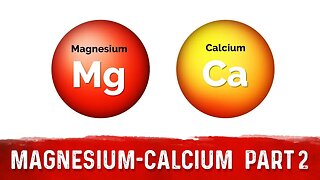 5:20
5:20
Dr. Eric Berg
5 years agoMagnesium and Calcium (Part 2): Causes Of Hypercalcemia & Hypomagnesemia – Dr.Berg
62 -
 3:33
3:33
Dr. Eric Berg
4 years agoHigh Doses of Vitamin D Can Deplete Magnesium
47 -
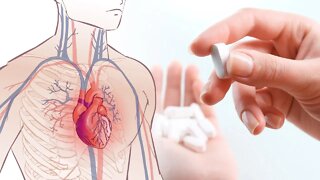 3:08
3:08
Natural Cures
6 years agoMagnesium Supplements: Should You Take Them?
67 -
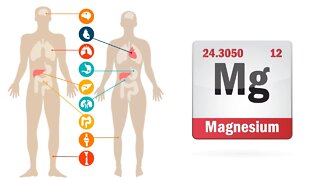 3:16
3:16
Natural Cures
7 years ago10 Reasons Why You Should Take Magnesium
23 -
 18:16
18:16
Pharmacist_Michael
10 months agoHealth Benefits of Magnesium
18 -
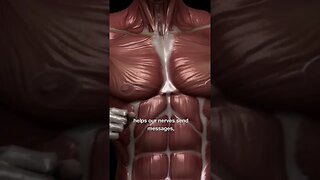 0:46
0:46
Natural Cures
8 months ago $0.01 earnedWhat Are the Health Benefits of Magnesium?
347 -
 0:58
0:58
Dr. Tom Biernacki
1 year agoMagnesium: The Mineral You're Not Getting Enough Of
70 -
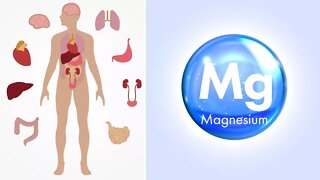 3:56
3:56
Natural Cures
6 years ago $0.04 earnedAre You Magnesium Deficient? How to Know & What to Do About It
113 -
 10:21
10:21
Dr Berry's Proper Human Diet
6 years ago $0.02 earnedMagnesium Deficiency: Symptoms and Supplements - 2021
80 -
![66%+ Have Magnesium Deficiency! [Make The 30 Day Change NOW!]](https://hugh.cdn.rumble.cloud/s/s8/1/T/Q/K/n/TQKnl.0kob-small-66-Have-Magnesium-Deficienc.jpg) 26:02
26:02
Dr. Tom Biernacki
11 months ago66%+ Have Magnesium Deficiency! [Make The 30 Day Change NOW!]
140